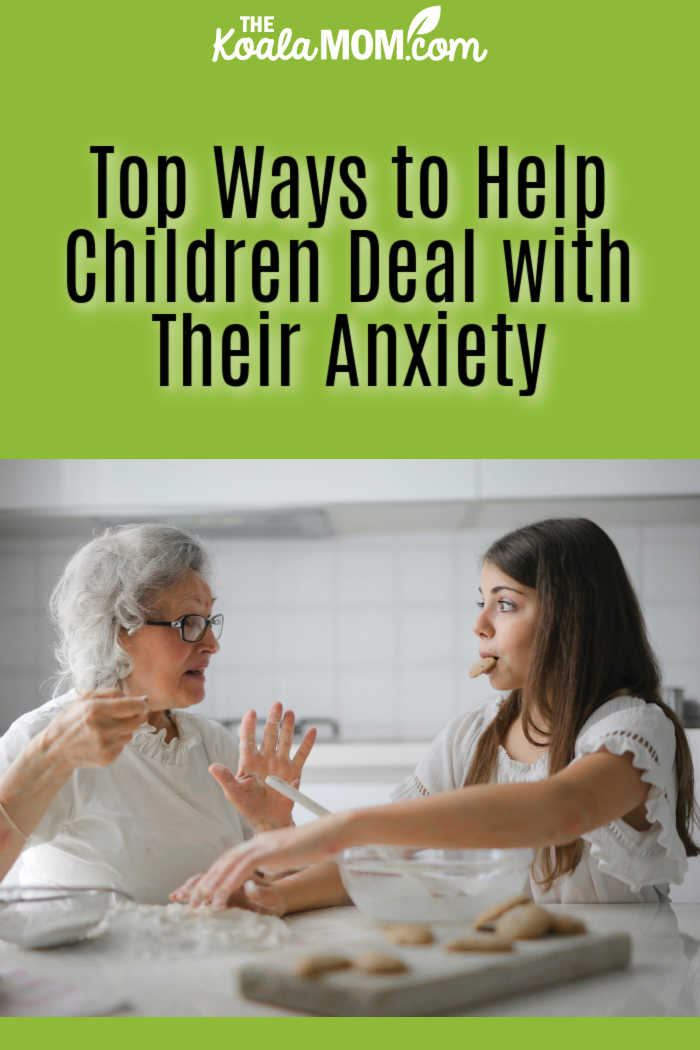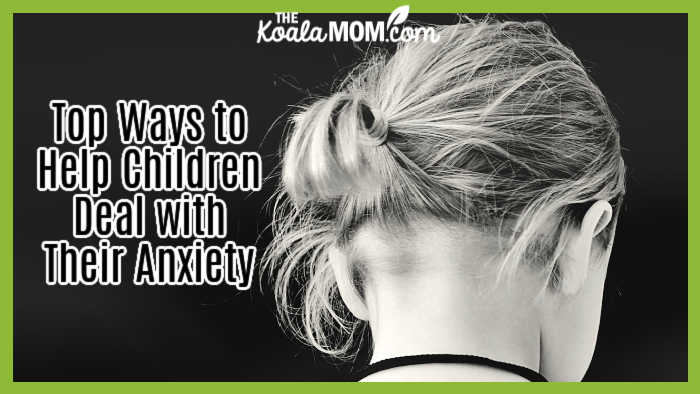As parents, it can be incredibly difficult to witness your child struggling with anxiety. All too often, we feel helpless and want nothing more than to make the problem go away. The reality is that if you’re able to provide your child with tools and strategies to manage their anxieties, then they will have a better chance of overcoming them in the long term. In this blog post, we’ll guide you through some of the top ways to help children deal with their anxiety so that they are equipped with the right set of skills for facing any challenge head-on.

1. Provide Resources that Explain Anxiety
One of the most effective strategies to help children deal with anxiety is to provide them with resources that explain what anxiety is. Start exploring some of the best kids books about anxiety and choose ones that are age-appropriate for your child. Children’s books about anxiety can break down complex emotions and scenarios into understandable and relatable stories, helping kids comprehend what they’re feeling and why.
Numerous well-written books tackle the topic of anxiety in a kid-friendly manner. Whether it’s a tale about a worry-eating monster or a narrative about a nervous squirrel, these books weave in the lessons about anxiety subtly, allowing the child to learn at their own pace. Kids realize they’re not alone in their anxieties, and these books help by showing characters going through similar experiences.
2. Listen and Validate their Feelings
Empathy is key when it comes to help children deal with anxiety. It’s crucial to listen to what your child is saying and validate their feelings without dismissing or minimizing their concerns. This doesn’t mean that you need to agree with their worries, but rather acknowledge their emotions as valid and important. This is the first step towards helping them feel understood and supported, which can be incredibly reassuring for a child suffering from anxiety.
Besides active listening, try to engage in open conversations about their feelings. Please encourage them to express their worries and fears verbally, as this can often help reduce the intensity of their anxiety. It’s important to approach these conversations with a calm demeanor and provide a safe space for them to open up. Remember, your role isn’t to provide solutions or fix their problems but to help them navigate and understand their anxiety.
Avoid downplaying their anxiety. Saying “that’s not scary” or “that’s not a big deal” isn’t helpful. To them, it is scary and it is a big deal. Try to remember a time in your childhood when something was particularly scary for your or made you feel anxious. What helped you overcome that? Tapping into your own feelings and what helped (or didn’t) can sometimes help you respond better to your child. Many of us grow out of childhood fears and anxieties, but those fears should still be acknowledged and not ignored.
3. Teach Coping Strategies
Teaching children coping strategies is another effective method in helping them deal with anxiety. Coping strategies can range from deep breathing exercises to mindfulness activities to progressive muscle relaxation. All of these activities can help your child to calm their mind and body and can be practiced anywhere and at any time. It’s crucial to help your child understand that these strategies are tools that they can use when they start to feel anxious or overwhelmed. (The strategies should be practiced when your child is calm, so that they know how to use them when they are not calm.)
In addition to those calming strategies, cognitive behavioral techniques can also be powerful in managing anxiety. These involve identifying, challenging, and changing the thoughts that lead to feelings of anxiety. While this might seem complex for a child, there are ways to make it accessible and engaging. For instance, if your child is worried about a school presentation, help them identify the thoughts causing their fear, challenge these thoughts with questions about their validity, and replace them with more positive, yet still realistic, thoughts.
4. Encourage Physical Activity
Physical activity plays a critical role in helping children deal with anxiety. Engaging in regular exercise releases endorphins, the body’s natural mood lifters, that can reduce stress and anxiety. Whether it’s team sports, dancing, biking, or simply playing outside, regular physical activity can help children positively divert their anxious energy, promoting overall well-being and mental health.
Physical activity also instills confidence and provides an excellent opportunity for children to socialize and make new friends. Achievements in physical activities can boost their self-esteem, and playing in a team can help kids learn valuable social skills, such as communication, cooperation, and problem-solving. This sense of accomplishment and the camaraderie they experience can go a long way in tackling their anxiety and fostering resilience.
5. Create a Safe Space
Children with anxiety may feel overwhelmed in certain environments. Creating a safe space at home where they can go when feeling anxious provides security and comfort. It could be a cozy corner in their room with favorite books and toys or a promise to speak openly about feelings without fear. This secure environment is a sanctuary where they can relax and let their guard down.
When children have a safe space, it provides them with security and stability in their chaotic world. Ensure they don’t feel pressured or rushed. Let them know it’s okay to take time to calm down and collect their thoughts. Reinforce that it’s normal to feel anxious. A safe space is not for hiding or suppressing feelings but for understanding and managing them better.
6. Lead by Example
Children often emulate the behavior and coping mechanisms of the adults around them. As a parent, you are the primary role model for your child. Therefore, it’s crucial to portray healthy coping strategies when dealing with your stress and anxiety. Demonstrate calmness during tense situations, show how you use deep breathing or mindfulness to manage your stress, and openly talk about your feelings and thoughts. Your child will observe and eventually adopt these techniques.
Also, maintain a positive and open outlook towards anxiety. Avoid portraying it as a weakness or something to be ashamed of. Instead, normalize discussions around mental health and create an environment where your child feels comfortable sharing their feelings and experiences. Through your actions and attitudes, you can instill a crucial lesson in your child: It’s not only okay to have anxieties, but it’s also perfectly okay to talk about them and seek help.

Dealing with anxiety is not easy for anyone, especially children who may not fully understand what’s going on. By providing them with the right resources and tools to manage their anxiety, as well as creating a safe and supportive environment, you can help your child build resilience and cope with their anxiety healthily. Remember to be patient and understanding, and always seek professional help if needed. Together, you can guide your child towards a happier and more confident future.

No Responses Yet